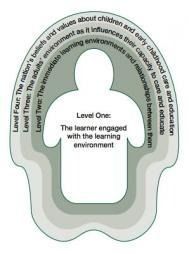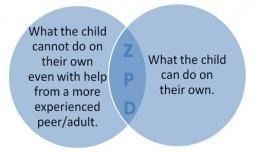Whole Child
Te Tamaiti
At Sunshine Childcare our teaching techniques are influenced by educational theorists, our own histories and childhoods and the great kiwi outdoors.
We acknowledge the importance of different pedagogical approaches to early child education and we tailor our teaching to meet the needs of individual children.
Some of the theorist’s whose practices underpin our own teaching philosophy are:
Rose Pere
Te Wheke and Te Whare Tapa Wha
Bronfenbrenner
Pikker/Gerber
Reggio Emilia
Vygotsky
Bronfenbrenner

A child’s learning environment extends far beyond the immediate setting of the home or early childhood programmes outside the home. Bronfenbrenner, in The Ecology of Human Development (Cambridge, Mass: Harvard, 1979) described it as a set of nested Russian dolls. The learner and their immediate environment are at the centre, the first level. The second level contains the major settings experienced by the learner: the child’s own home, the service or setting beyond their home, and the relationships between these environments. (MoE, 1996)
Pikler/Gerber
The basis of Magda's Gerber's philosophy and Emmi Piklers ‘Freedom of Movement’ philosophy is respect for, and trust in the baby to be an initiator, an explorer, and a self-learner by ensuring the child has:
An environment for the child that is physically safe, cognitively challenging and emotionally nurturing.
Time for uninterrupted play.
Freedom to explore and interact with other infants.
Involvement of the child in all care activities to allow the child to become an active participant rather than a passive recipient.
Sensitive observation of the child in order to understand his or her needs.
Consistency, clearly defined limits and expectations to develop discipline.
(Gerber & Sunbury,2012)
Reggio Emilia
The Reggio Emilia Approach is an innovative and inspiring approach to early childhood education which values the child as strong, capable and resilient; rich with wonder and knowledge. Every child brings with them deep curiosity and potential and this innate curiosity drives their interest to understand their world and their place within it.
Children are capable of constructing their own learning
Children form an understanding of themselves and their place in the world through their interactions with others
Children are communicators
The environment is the third teacher
The adult is a mentor and guide
(An Every Day Story, 2016)

Vygotsky
The space between the things a child can do on their own, and the things the child cannot do, even with help is called the ZPD or Zone of Proximal Development. The overlapping ZPD area is the skills that the child can learn with the help, support and scaffolding of the adult. According to Vygostky, the child learns by following the adult’s example and then gradually develops the ability to do it with no help (Wikipedia, 2012).
